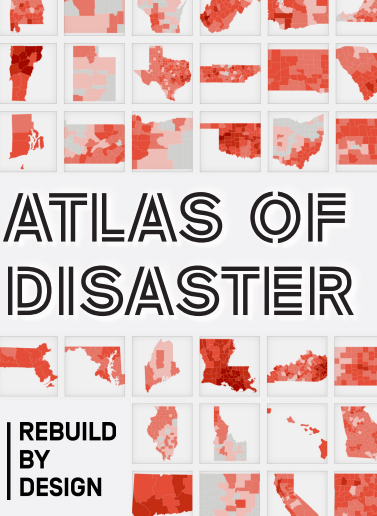
ALBANY — Rebuild by Design releases the report “Atlas of Disaster: New York State” that identifies the impacts of recent climate disasters across New York State at the county level, for the years 2011-2021. The data shows that every single county in New York has experienced a federal climate disaster between 2011-2021, with 16 having five or more disasters during that time.
The counties of Suffolk, Herkimer, and Delaware have had the most federal disaster declarations at a total of seven each. New York County (Manhattan) has received the highest total federal post-disaster assistance (FEMA Public Assistance and Hazard Mitigation Assistance) within the state; however, Greene County has received the highest per capita post-disaster assistance in the country. New York State has received the most federal post-disaster funding of any state in the country during that time period, with the most expensive event being Hurricane Sandy in 2012.
“This data unequivocally shows that for every New Yorker, no matter if they live in coastal, riverine, lakeside or land-locked communities, climate change is here.” said Amy Chester, Managing Director of Rebuild by Design, “Every day that we are not investing in adapting New York State’s infrastructure to current and future climate conditions, we are actively working against our own pocketbooks. We can do better.”
The report includes eight maps that show county-level data for where major disasters have occurred, where post-disaster support has been given, where the most socially vulnerable populations reside, and the energy reliability by utility area. It also provides county-level disaster data within State Assembly, Senate, and Congressional district boundaries.
Rebuild by Design calls for New York State to create new, long-term, funding sources for climate adaptation infrastructure such as upgrades to sewer infrastructure, raising roads, helping communities move from risky areas and restoring natural resources to reduce risk, and premature death from extreme weather events. State funding could also leverage additional federal funding by providing a local match for programs that will be made available under the Inflation Reduction Act and other federal sources.
“Extreme climate events mean life or death to the most vulnerable New Yorkers. Since 2011, tropical storms, hurricanes or snowstorms across the state have resulted in over 100 deaths,” said Amy Chester, Managing Director of Rebuild by Design “Additionally, hundreds of people die prematurely each year from hot weather. Each moment that we delay action towards a solution contributes to a higher cost to lives and livelihoods.”
Rebuild by Design, brought on the expertise of APTIM and iParametrics to take a county-by-county look at the rate of federal disaster occurrences and the costs of extreme weather in the United States. This data is included in the national report Atlas of Disaster, which has a nationwide scope, to provide a more in depth look at the impact of climate disaster in New York State. The data represents a conservative estimate as data in the report does not include state-declared disasters, state post-disaster assistance, or additional federal funding that comes after a storm such as loans and insurance payouts, because it is not publically accessible.
“Extreme weather events are affecting every county causing significant economic and social hardships,” said Jeff Stevens, Vice President of Emergency Management and Community Resilience at iParametrics, “New York State needs to shift its climate disaster spending to proactive hazard mitigation solutions to ensure we address extreme weather events before communities suffer.”
The New York State report builds on the 2019 report, Resilient Infrastructure for New York State: We Cannot Wait Any Longer, that found that in the coming decade, the cost of inaction (doing nothing) is estimated to be at least $55 billion for coastal storm and flood-event-related damages. However, investing in preventative measures saves money and lives. The National Institute for Building Sciences found that every dollar invested in pre-disaster infrastructure (mitigation) can save as much as $6 — costs that taxpayers would otherwise shoulder.
“Increased funding at the State level will make it easier for localities to draw down federal infrastructure funds and will help the United States get ahead of the next storm instead of always fighting the last one,” said Dr. Paul Tschirky, Senior Director of Resiliency at APTIM.
This report informs our understanding of the impact of climate events on communities throughout New York State, while also highlighting the need for further state-specific data collection to understand the true impact of these events. Nationally, in 2022 alone there were 18 climate disaster events with losses exceeding $1billion each. A majority of the funding that is available is only available after an extreme event. We need to shift those investments ahead of storms – before communities suffer.
“In order to achieve true community resilience ahead of extreme weather events, we need a complete overhaul of the systems that have long left us playing catch up,” said Katy Knight, Executive Director of Siegel Family Endowment, one of the supporters of this report. “From investing in proactive mitigation strategies to acknowledging the responsibility of all sectors – not just green tech – to adapt to the realities of a warming planet, we’ll not only save our economy crucial dollars, but ensure our lives and livelihoods are protected for generations to come.”
Rebuild by Design will make the data from the report available for researchers. The report is available here.
All WNY is made possible thanks to coffee and sleep deprivation.
We appreciate your readership. We like money, too.

